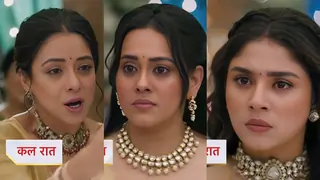Repetition of verse or even a theological phrase, or the adjectives descriptive of the powers of the Almighty are not confined to any one religion. What we call Zikr-the tradition of repeating such phrases for a very long duration, is part of the mystical tradition as well as of daily worship and service of nearly all the religions. Its one purpose is to train the mind in concentration on the faith and religion, to the exclusion of all other mundane matters from the mind. The Christian monks of different orders chanted the names of God, the devotion towards the Christ and his teachings as a part of their daily regimen in their prayers.
Only the Gregorian Chant had a very functional purpose. The monks of this particular order employed the method to memorize and pass on the scripture and prayers to the next generation and they repeated the chant lest these be forgotten or distorted as most of these were not written down. Writing something on skin or on stone was something they could not afford, in money, material or time. In Muslim history, the tradition of memorizing the Holy Quran by qaris, we call them Hafiz-e-Quran, can be presented as the parallel example.
This practice of continuous chanting by mystics in Islam owes much to the practice among Christian monks and the mystics who devoted all their time in prayers and worship of God, during the lifetime of the Holy Prophet (peace be upon him) were called Ashab-e-Suffa. They remained stayed at a platform, in Masjid-e-Nabavi, which in Arabic language means Suffa.
Afterwards, the persons who followed this style of prayers and worship of Almighty adopted by Ashab-e-Suffa are named as Sufi. To enable the general people to join with them the Sufis has started the gatherings in which one person, chants the poetry in praise of God, Holy Prophet and his disciples, and the others people listen him which mentioned Hazrat Imam Ghazali by as Sama. With this word, a change is indicated. While Zikr means chanting, Sama means a listening to it.
Since mysticism stipulates a subjective condition in which one person establishes a personal and highly individual relationship with the being, Sam'a brought a shift in the experience. Though, intrinsically the experience is still subjective and individual, the emotion is induced and heightened by a source outside the mystic. The evidence is that the chanter could not chant the words without the help of any musical instrument.
The idea that Sama is an extraneous element, meant to heighten the emotion of the mystic, may be disputed by some who firmly believe the mystic experience to be entirely individual and personal. But a simple question suggests itself here. Is the chanter a mystic himself? The answer may disappoint some. The chanter is usually a professional musician, He has no doubt imbibed a tradition but he is not a mystic at all. He knows musical skill, to manipulate the feelings of the mystics and also those among the audience who are not mystics.
The sufi order whose adherents left Hijaz and migrated to India in those times followed preaching of Sharia as an essential precondition of true religion and joined with ulema in preaching the simple observance of the faith to new Muslims in remote areas. Keeping in view the association of the people of sub-continent with music, the Sufis has very well preserved the tradition started by Imam Ghazali and started using the various tunes harmonic with different rythemic patterns in gatherings of Sama for presenting the poetry. This rythum and tune was such melodious that the listeners were lost in that and the preaching of Islam were very easily transmitted to the hearts of them. The person who chants in those gatherings were named as Qawal. In those time musical instruments were not accompanied in Sama but later on string and other instruments were used.
With the advent of Islam in Indo-Pakistan new cultural values were introduced, the taste of which was never familiar to the local people. It is true that Indusland had long been a centre of traffic from Central Asia and western lands, but Central India kept its Aryan Tradition and alien winds found the door closed.
In such a historical situation of eleventh and twelfth century AD it was quite difficult to introduce a new religious value-pattern based on monotheism. The preachers of Islam, particularly the mystics, played the major role in determining the character of Islamic religion in India. In eleventh century AD Hazrat Sheikh Ali Hujweri settled in Lahore to preach and convert the local population into Muslims. His area of work was northern part of the Sub-continent.
But Hazrat Khwaja Moin-ud-din Chishti had to face the real difficulty in performing the same duties in Ajmer. Because in India prayers were associated with music and to chammin it was highly attractive. Any disassociation from music and propagation of ascetic life could have resulted in failure. Hazrat Khwaja Moin-ud-din Chishti was not unaware of this peculiar socio-cultural tradition. It is a well established fact that Sam'a modified in the form of qawali in the times of Hazrat Khwaja Moin-ud-din Chishti. All famous qawals of Pakistan stand testimony to it.
He was deeply involved in Sam'a and sometimes he was totally lost. It is also said that he had a dialogue on qawali with Hazrat Abdul Qadir Gilani of Baghdad and after the discussion both of them attended Mehfil-e-Sam'a. Afterwards, keeping in mind the necessity of music in the cultural values of the people of sub-continent, his successors and disciples used the way of Sam'a more to propagate Islam and instructed their disciples also to learn the local languages.
Historically we have precedent of qawali being sung by qawals in the time of Mahmood of Ghazna. Before Khusrou the famous mystics promoted and patronized qawali. Hazrat Khwaja Qutab-ud-din Bakhtiar Kaki died in ecstasy while listening to qawali. Masood Saad Salman Lahori has mentioned a duo of qawals, namely Mian Hisamuddin Nigahi and Mian Salahuddin Dargahi, about a century before the birth of Amir Khusrou. They were companions and disciples of Hazrat Khwaja Moin-ud-din Chishti.
But from this the authenticity of Amir Khusrou as Originator of Qawali is not challenged. He was disciple of Hazrat Khwaja Nizam-ud-din Auliya and coined the word Qawali for the Indian form of Sam'a as it exists today. Actually the word Qawali is derived from Qaul literally means Speech, a form of musical composition set to tune and suiting mystic gathering. He played a basic and very important role in the formation and regulation of Qawali in the sub-continent and introduced Qaul and Qalbana along with other ragas. According to the author of Ma'dan-il-Moseeqi, Nawab Mohammad Karam Imam, Amir Khusrou composed almost all the qawalis in four Ragas namely Bageshri, Sohni, Bahar and Basant. Now a day qawali can be composed in any raga.
Having instructed by Hazrat Khwaja Nizam-ud-din Auliya, Amir Khusrou banded together 12 elite youngsters and imparted basic knowledge of Qawali to them. Out of these, the names of only five, namely Mian Sa'mat (Leader of group and descendent of Mian Nigahi Mian Dargahi), Hasan Sawant, Behloul, Tat'ar and Fughani are given in the books of history.
Qawali, as a form of music, always remained matter of debate in Sultanate period between exponents of Sharia and mysticism. In the time of Ghayas-ud-din Tughlak it was finally decided, that moral side of Sam'a depends upon the subjective inclination of the participants and listeners, the Qawal should be male, no erotic poetry and instruments were allowed. The qawals tend to link themselves with mystic orders. Therefore we find them with names such as Sabiris (with Hazrat Alauddin Ali Ahmed Sabir of Kalyar Sharif) and Faridis (with Hazrat Baba Farid Shakar Gunj of Pakpatan Sharif) and others. It should however be kept in mind that though qawali owed its development in a religious and mystic tradition, technically it acquired its base in the classical music which is not only the accepted and patronised form of art but also has its roots in the religion of Sub-continent.
History has kept us in dark, about qawali and qawals, after Khusrou till the Mughals. In the reign of Shah Jahan we hear about two famous qawals Raza and Kabir. Kabir was disciple of Sher Mohammad who was considered to be one of the masters in mystic music. Hazrat Baha-ud-din Zakarya Multani was also well versed in mystic music.
In 18th century Hazrat Miyan Mouj Niazi earned extra-ordinary fame as a qawal. He made new compositions along with Sadarang. In the start of 19th Mian Ta'nrus Khan, descendent of Mian Sa'mat, got the reputation. He was deeply interested in mystic music and was emotionally attached to Hazrat Khwaja Nizam-ud-din Auliya. In this period Taj Khan contributed a lot to the art of qawali. His two sons Ghulam Rasool and Jani were equally reputed. In the time of Mughals, some books were also written in favour of Sam'a and Qawali. Abdul Jalil Bin Abdul Rehman wrote a book Der Jawaaz-e-Sam'a in 1650 AD. In the book Meerat-ul-Khyaal by Sher Khan Lodhi, we find strong arguments for mystic music. From here onwards it is possible for the scholars to trace the chronological development of qawal families and famous qawals.
The names of Kallan Khan Bunnay Khan, Mubarak Ali Khan Fateh Ali Khan and their sons Nusrat Fateh Ali Khan and Mujahid Mubarak Ali Khan, Manzoor Ahmed Khan Niazi, Ghulam Fareed Sabri Maqbool Ahmed Sabri, Munshi Raziuddin Ahmed and Bahauddin Qutbuddin of Pakistan and Aziz Ahmed Khan Warsi of India are preferred to be as the qawals who become famous domestically as well as internationally. Out of these, Munshi Raziuddin Ahmed, Manzoor Ahmed Khan Niazi and Bahauddin Qutbuddin are descendents of Mian Ta'nrus Khan.
Furthermore, in recognition of their services and work in the field of Qawali, Bahauddin has got Tamgha-i-Imtiaz whereas Munshi Raziuddin Ahmed, Ghulam Fareed Sabri and Nusrat Fateh Ali Khan got the Presidential Pride of Performance Award from Government of Pakistan. Also, Aziz Ahmed Khan Warsi, grandson of Mian Ta'nrus Khan's nephew, honoured as Padam Shri by the Indian Government.
Today the qawals are carrying on a popular tradition with a very wide appeal, if not the widest. In an age in which we are unhappy witnesses of dying art of the classical music, they are the most popular singers. They appeal to our most basic and yet abstract emotions. If they did not have a sophisticated audience, they were always a roaring success in villages and with religious people. In this part of world this is perhaps the broadest base for any artist to operate upon. qawali as an art form enjoys a popularity unrivaled by any other musical form. Not this but all the qawals worked hard to preach Islam and spread this popular tradition throughout the world by using their skill, intellect and now a day particularly qawali is having a revival.
Qawali in a way, therefore is a leveler of social distinctions, as it deals with a non-material, spiritual theme. But through the passage of time the qawal himself has come to observe certain rules of the art. Since he knows that his theme is spiritual and his words and music are to appeal, not to intellect, but to the intuition of the listener, he has to know the precise effect of his performance on the listener. Every qawal knows that the magic of his performance resides as much in the verse as in its rendering. The words are largely responsible for creating a state of transport. The continuous repetition of certain words is therefore imperative, if the words have to produce the effect.
A good qawal, in this way establishes his communication on two levels; he reaches his listener through intuitional, non-communicative and individual experience, yet he reaches not one but many individuals at the same time. This combination, of the personal with the universal, makes qawali unique in its appeal.


























